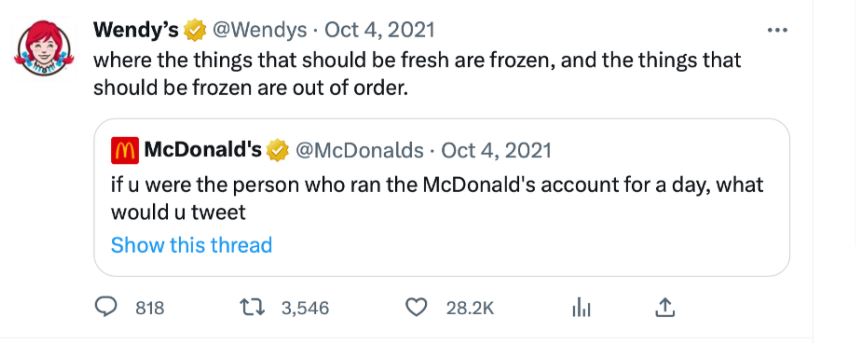Chapter 8: Setting an Up Front Social Strategy
The center of the Social Media Strategy Wheel is audit/discovery – an analysis of a brand, including its social channels and what it shows on that very public face. Hootsuite offers a social media audit template and guide with suggestions on what to evaluate and how to organize the results. A realistic understanding of where the brand is and where it wants to be allows you to set goals and objectives specifically for social channels that support or align with a larger framework. It paves the way for development of an up front social strategy.
Let’s say a major shoe retailer sets a goal to increase sales by 10 percent over the previous year. With this in mind, the retailer could consider social media as a tool to gain customer insights and provide market research on new potential audiences. Or it could focus on strategically growing its social following as a way to bump up sales since 57 percent of people who follow a brand on social are more likely to buy from them according to Sprout Social. Yet another strategy might be to use social to support its brand as a retailer that provides strong customer service by extending that customer service into the social media space.
Up front strategies tie back to a company’s objectives, but the ever-changing digital space also requires an ongoing social listening process that allows brand to flex strategies based on what others are doing and saying. Michalovich says one key is to not just keep an eye on what competitors are doing, but what everyone is doing.
“It’s a really crowded space now so there’s not really room for error. You’re competing with everyone, not just competitors in your industry.” And this competition requires strong strategic planning, rather than what Michalovich calls “random acts of social.” “Strong strategic planning rather than random acts of social. -Steve Michalovich” He advises having a buttoned-up strategy and understanding how you’re going to communicate with people and the connections you’re trying to make with social. “Have a really good analysis of what’s going on in the industry and what others are doing to succeed.” What are competitors doing? What are successful brands doing? What are new trends and tools?
Wendy’s built a large social media following and received recognition like topping Fast Company’s list of the world most innovative companies in the social media category (see Fast Company’s article on Wendy’s epic social strategy).
Their Twitter strategy of responding quickly and playfully roasting competitors and others helped put them at the top.

Wendy’s posts strong content, but their social success also points back to a solid strategy of reacting real-time and with a unique and witty voice on a social media platform designed for quick-hit statements and back-and-forth conversation.
Brands can set an overarching up-front social strategy or vary strategies by social media channel. They can also employ different strategies for different campaigns or initiatives.
The Columbus Arts Festival, one of the most highly acclaimed arts festivals in the nation, returned in person after a two-year hiatus due to COVID-19. The festival worked with Irvin Public Relations on an influencer strategy. They identified and secured six micro (10K-100K followers) to mid (100K-500K followers) local influencers that catered to the Arts Fest’s desired demographic and had feeds/content that complemented the festival’s goals. The influencers posted in advance of the festival and attended and posted about their experience live. This strategy reached nearly 125,000 people and generated 15,000 engagements. See an Irvin PR case study to learn more about the campaign.
In the video below, Michalovich talks about the importance of intentional strategy in professional use of social media.
